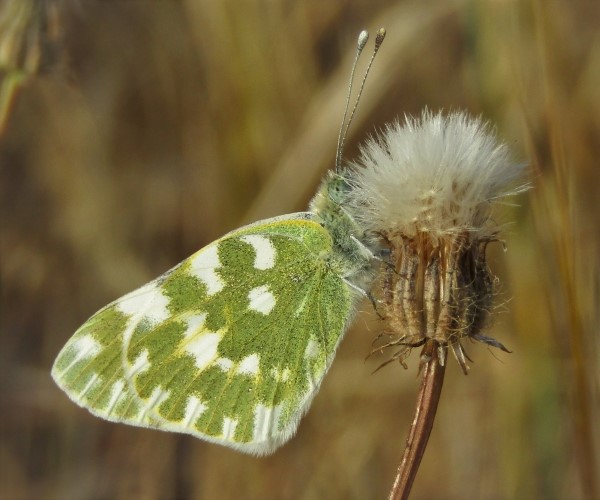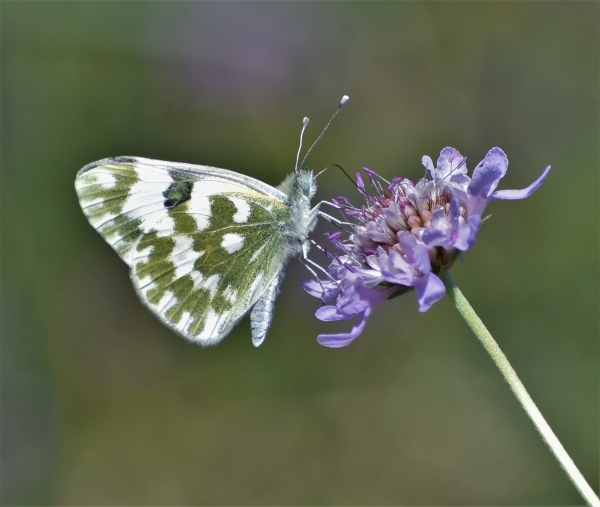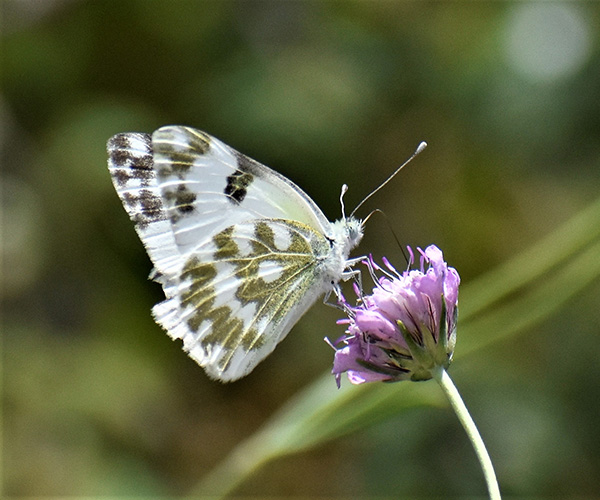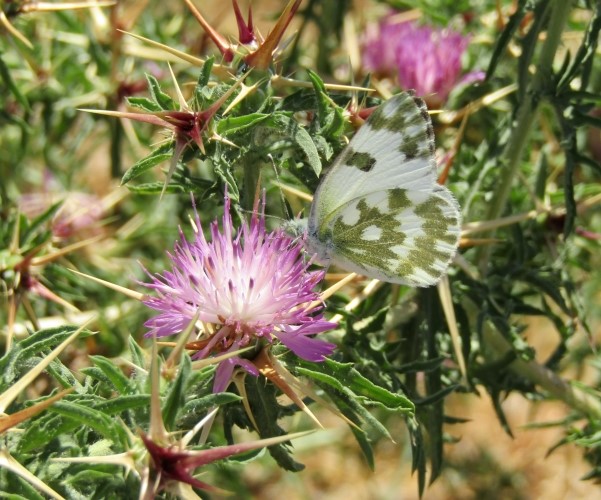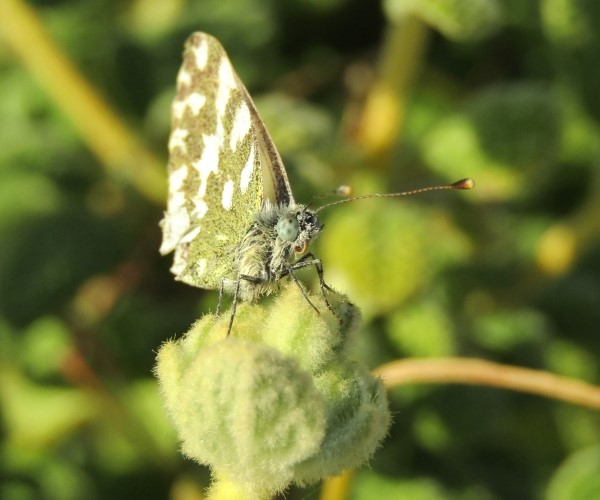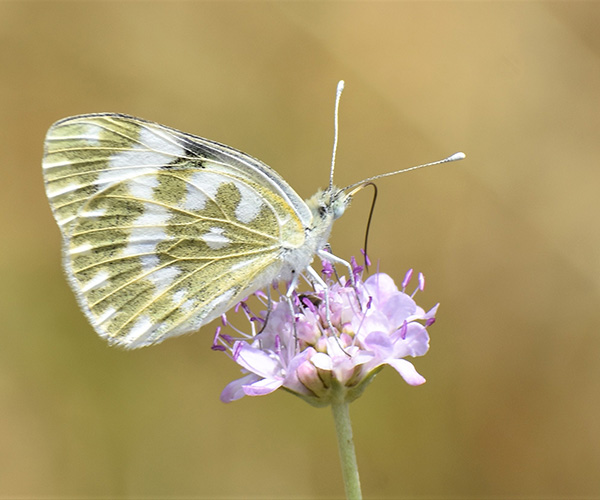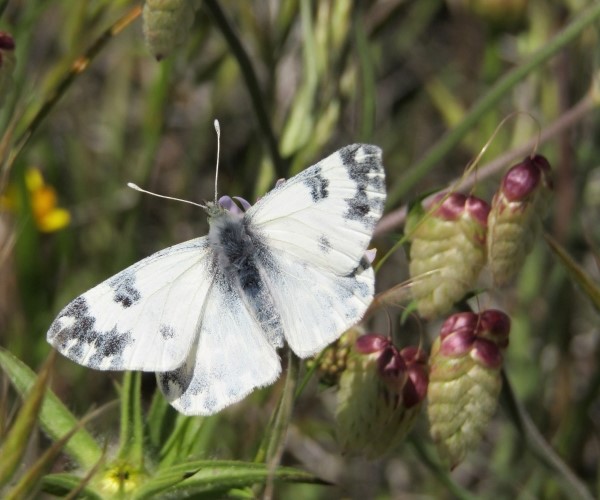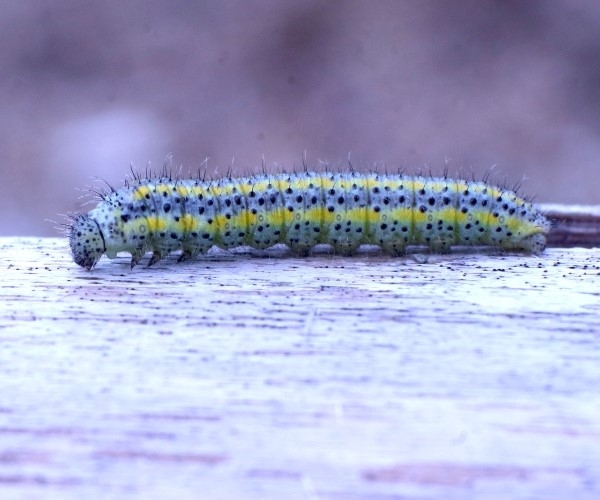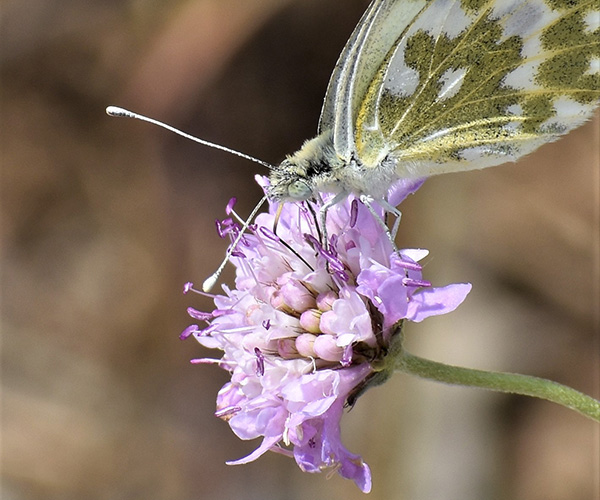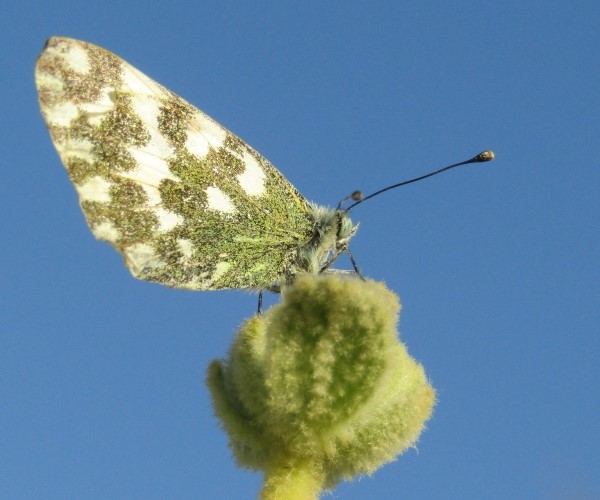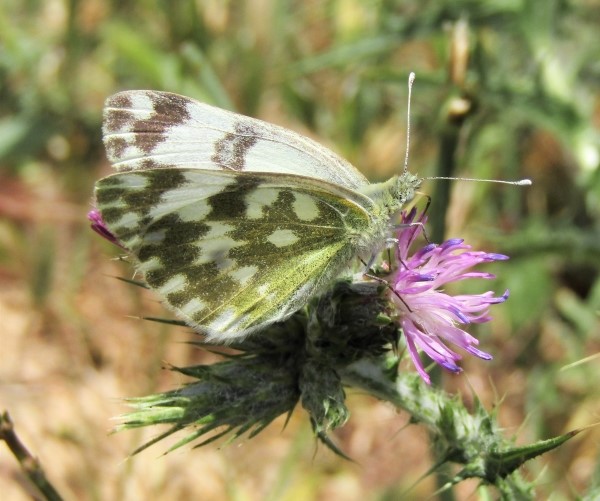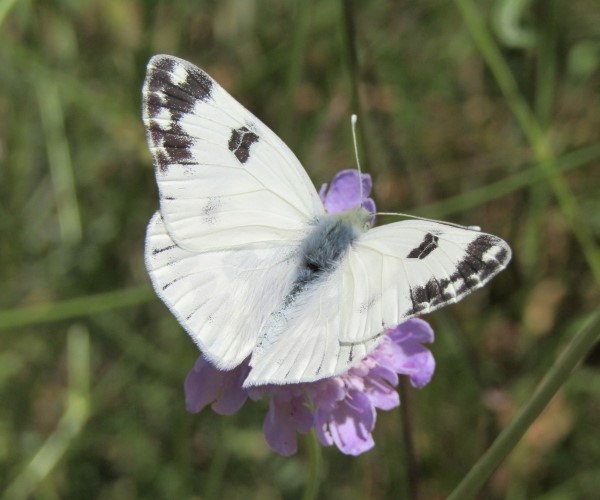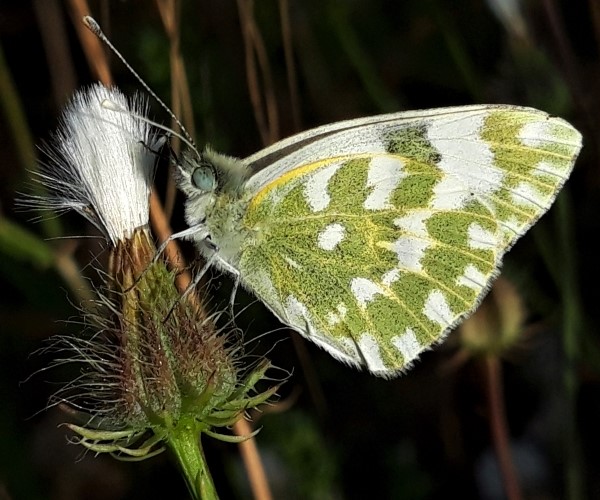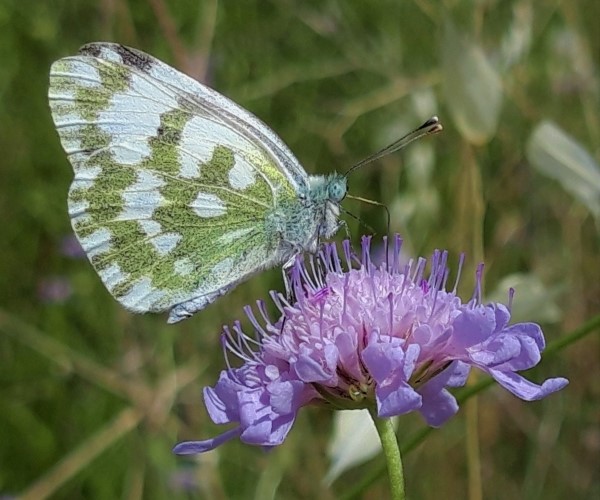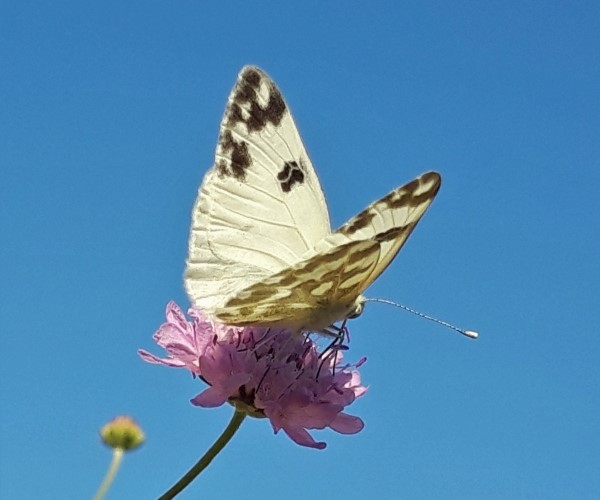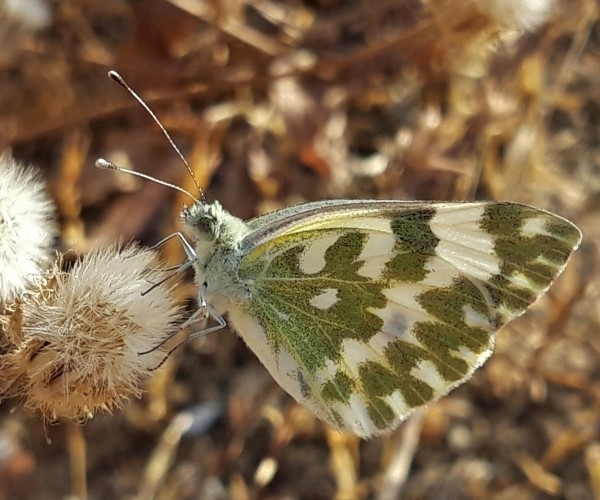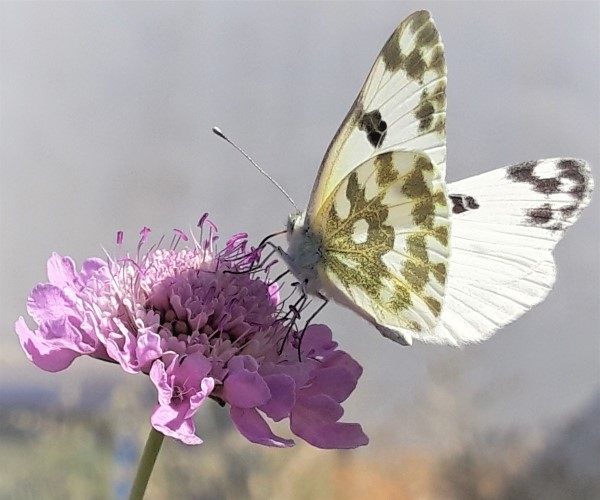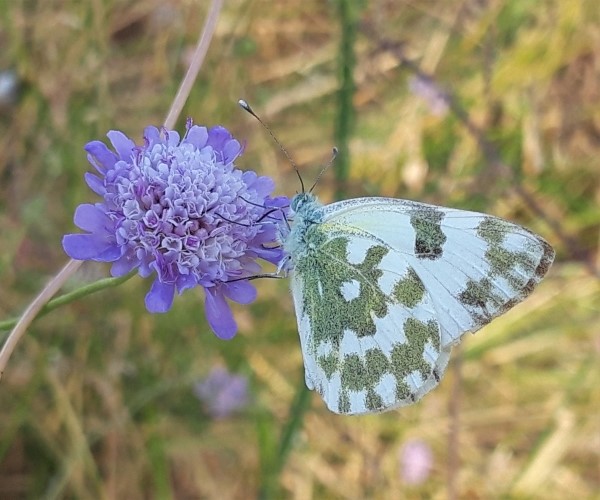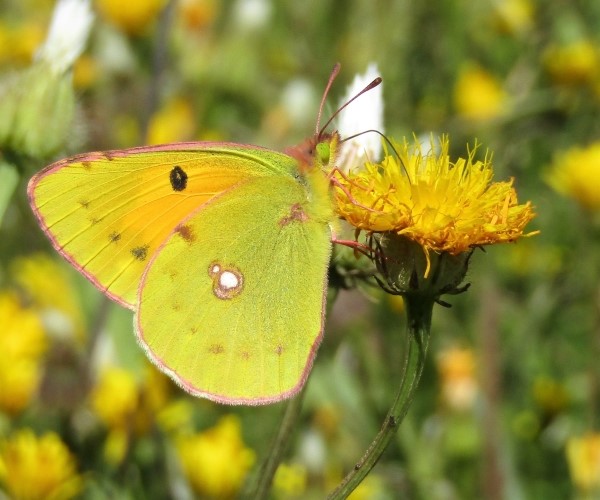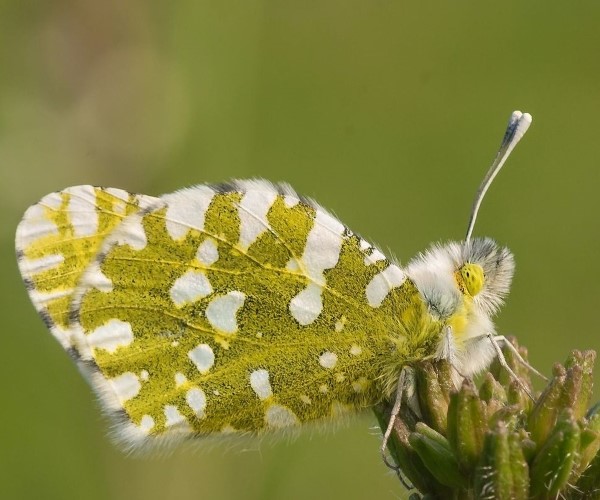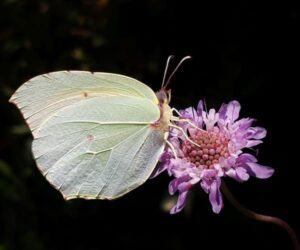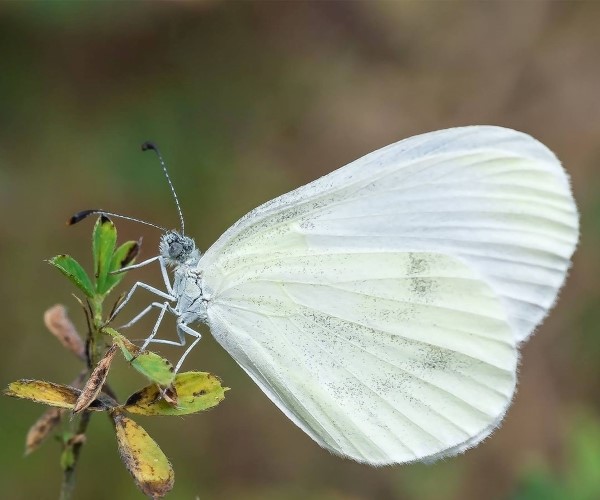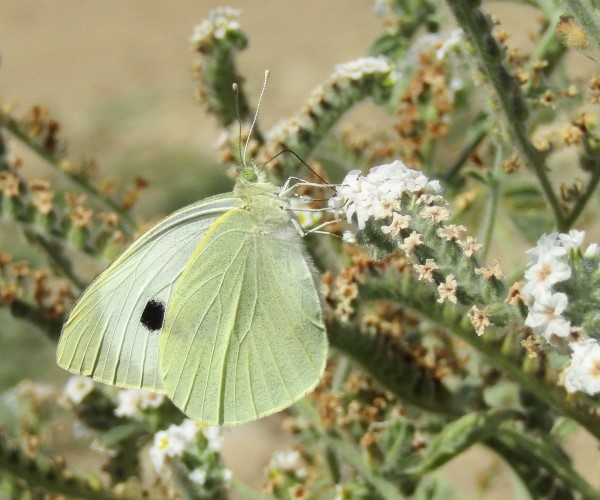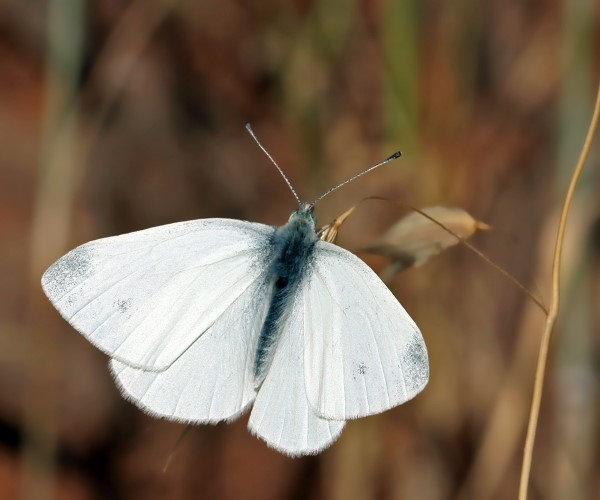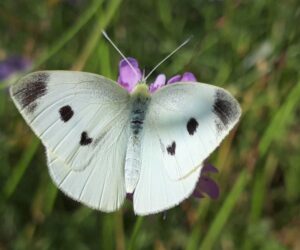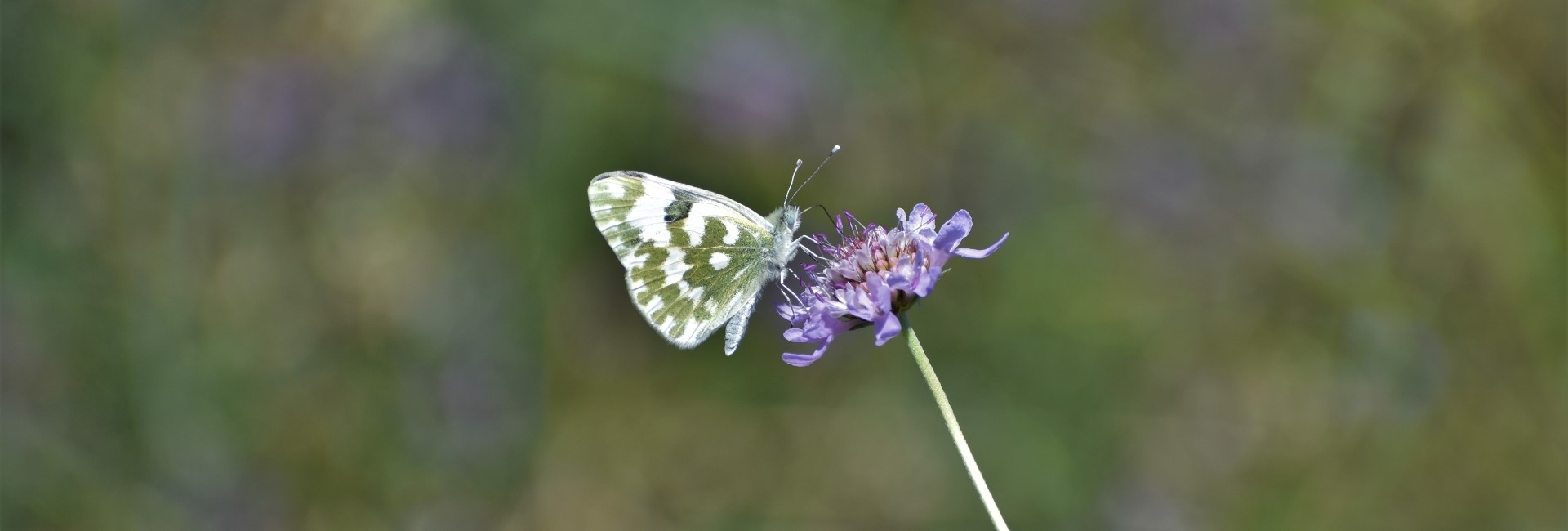
Pontia edusa, Crete - photo © Ch. Almpantakis
Pontia edusa
BUTTERFLY INFO
Pontia edusa is a butterfly of the family Pieridae on the island of Crete, Greece.
Scientific name
Pontia edusa (Fabricius, 1777)
Common name
Eastern Bath White
Classification
Family: Pieridae > Subfamily: Pierinae > Tribus: Pierini > Genus: Pontia
Wingspan
Male to female: 45-50 mm
Appearance
The forewings are white with black stains and a black spot. The underside of the hindwing is characterized by black and green-yellow scales, which create a greenish-white variable pattern.
Both sexes are similar; female has generally larger marks and additional three black marks in the postdiscal area of the upper side of the hindwing. Next generations appear slight differences.
Behavior
The butterfly is active only in hot sunshine when it nectars avidly at a wide range of flowers.
Habitat
Pontia edusa in Crete lives in any open grassy or flowery areas, and in open, mostly dry warm habitats: coastal dunes, grasslands, rocky slopes, farmland, vineyards.
Food plant
The larva feeds on Brassicaceae, i.e. Sinapis alba, Cakile maritima, Erucaria hispanica, etc., and Resedaceae, i.e. Reseda lutea.
Flight period
The butterfly flies in 2-3 generations per year.
| Jan | Feb | Mar | Apr | May | Jun | Jul | Aug | Sep | Oct | Nov | Dec |
Remarks
The butterfly could be confused with another Pieridae present on the island, Euchloe ausonia.
Here are some useful tips to spot the difference:
- On the underside of the hindwing, the white marks of Euchloe ausonia appear to be round white and can be distinguished from Pontia edusa, where these marks are irregularly shaped.
- The black discoidal spot is a thin black bar, and not as large as in Pontia edusa.
- There is a white mark near the apex on the upper side of the forewing that is absent in Pontia edusa.
Status*
Least Concern (LC)
Pontia edusa Distribution Map
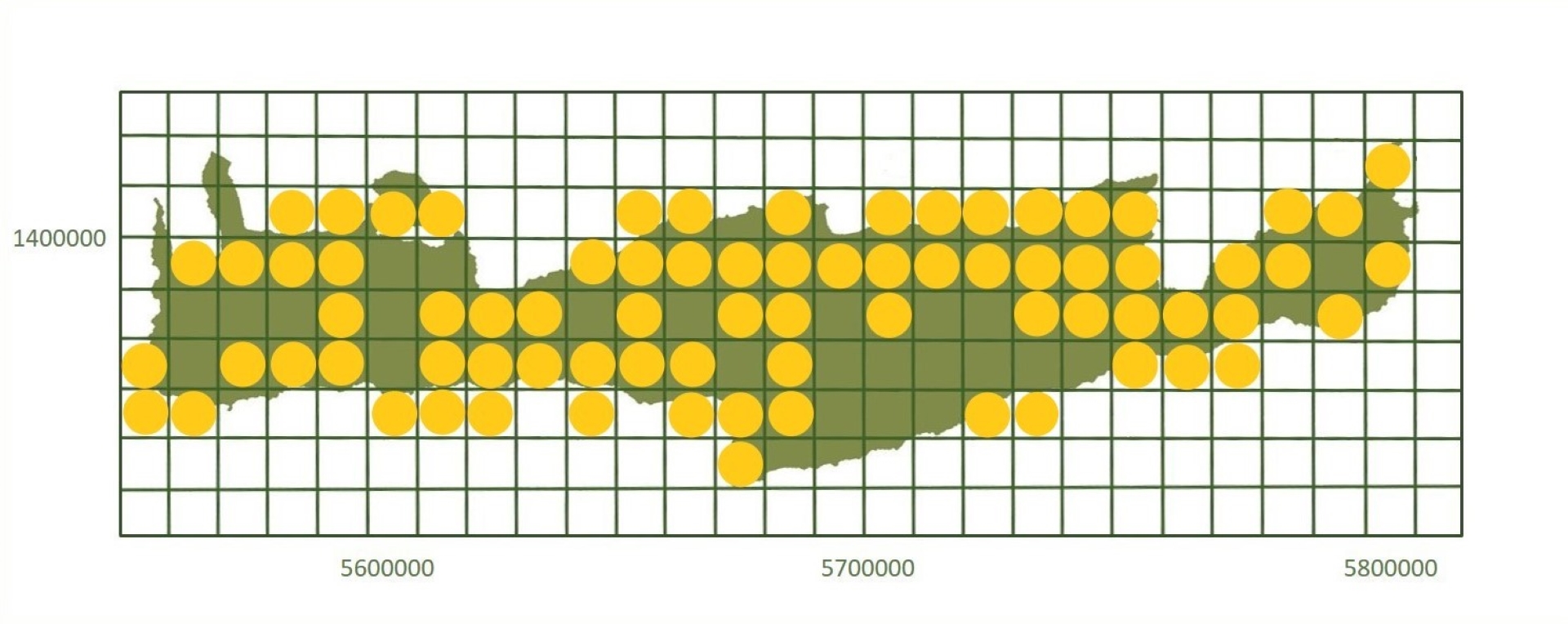
*based on http://www.pamperis.gr/THE_BUTTERFLIES_OF_GREECE/MAPS.html, updated Dec 2025 (ETRS89, grid 10X10 km)

